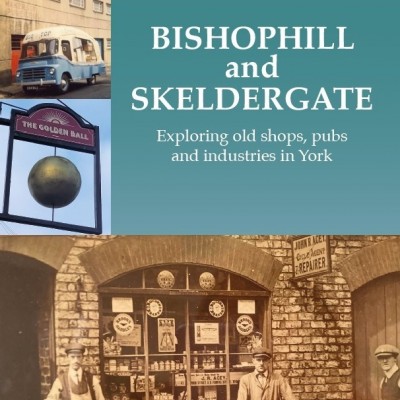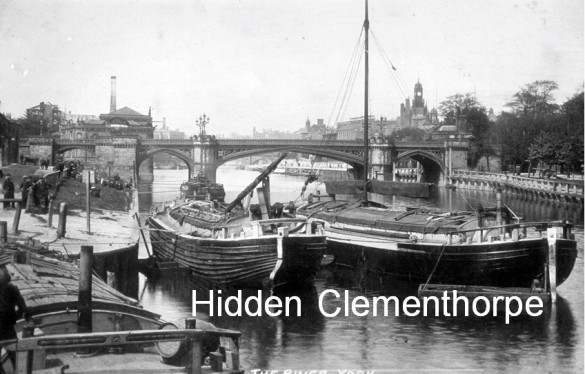14th December 2020
Hidden Clementhorpe - a new walk
Our latest smartphone walk, the fourth in our series of lockdown history walks, is now live on our website here.
This new walk uncovers the history of Clementhorpe, just outside the York City Walls and along the west bank of the River Ouse.
Clementhorpe was one of York’s earlier suburbs, and it has a long and diverse industrial history. Our members John Stephens and Mave Morris carried out much research to explore these industries last year, and you can see their results on our website here. Now John has created a walk to trace the remains of these old concerns, which date from the early nineteenth century up to the present day. While modern Clementhorpe is very largely residential in character, there is much of interest to explore.
During the eighteenth and nineteenth centuries the area supported a wide variety of industries, including shipbuilding, glass making, malting and brewing, tanning, dying and thread making, manufacture of fertilisers, ropes, nails, ironwork and confectionery. The river was lined with busy wharves, and horses were everywhere.
Terry’s were in Clementhorpe until they moved to Bishopthorpe Road in the 1920s. There was a boatyard here, equipped to make vessels up to 215 ft long, and remembered in the name of the Slip Inn. Another old firm made medicine bottles, while thread mills specialised in shoe thread, using waxed flax.
The large Co-operative building housed a coal depot, bakery and bacon processing. The Rope Walk was a long, thin site where cords could be twisted to make rope. DeLittle’s in Vine St was founded in 1888 as the Eboracum Letter Factory. You might not be aware that when it finally closed, it was the last manufacturer of wooden type in Britain, and the company’s catalogues are now sought-after collector’s items.
Some of the historic features of The Maltings in Lower Darnborough St/Lower Ebor St have been preserved in a new residential development.
Coal and horses played a hugely important role in the development of Clementhorpe, and a local coal merchant, the Air family, is also featured, as well as the horse trough dedicated to the Richardson family in Bishopgate Street.
The walk pays tribute to the philanthropic commemoration of the war at Rowntree Park, by the Rowntree family.
If you intend to follow this walk we would urge you to try it soon. Projected works by the Environment Agency along Terry Ave will close off some of its features. Occasional flooding will also cause problems.
We’re very grateful to John Stevens for his hard work in creating this fascinating walk.




